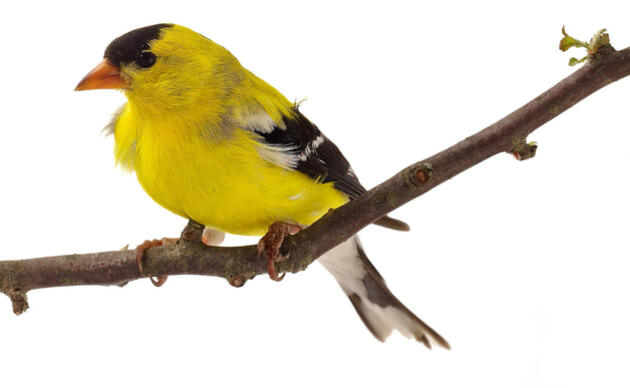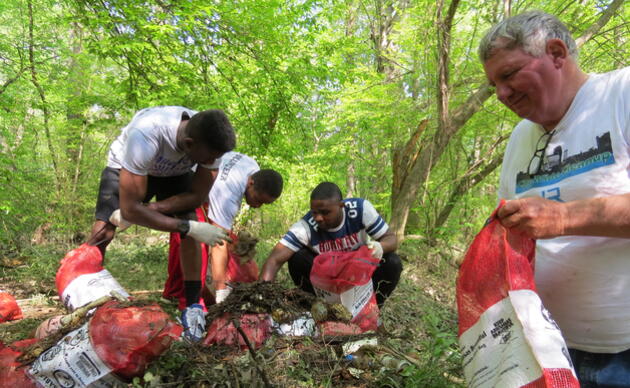February 12, 2019 (Baton Rouge, LA) – The challenges are huge, but we have an enormous opportunity to save much of the Gulf Coast for both birds and people. We can’t afford to blow this." said David Yarnold, President and CEO of National Audubon Society (@david_yarnold) after the release of an extensive report, Audubon’s Vision: Restoring the Gulf of Mexico for Birds and People. The report highlights projects and programs critical to help the region and its wildlife recover from devastating hurricanes, oil spills and other environmental and man-made disasters. At the center of the largest ecosystem restoration effort ever attempted, Audubon recommends an investment of more than $1.7 billion in restoration and conservation efforts.
Audubon Louisiana, the state office of the National Audubon Society, identified critical priorities in Louisiana to confront challenges facing birds and their habitat. Coastal Louisiana is critical for supporting a large variety of coastal waterbirds, shorebirds, and marshbirds. However, more than 1,900 square miles of coastal habitats have been lost to open water since the 1930s, the result of a series of natural events and human modifications to the landscape. Through advocacy and policy action, Audubon Louisiana is working to enact the most effective approaches to restore ecosystems and stabilize land loss rates.
According to Erik Johnson, Director of Bird Conservation for Audubon Louisiana, “Louisiana’s coastline, built over thousands of years by the Mississippi River, is critically important to regional, national, and international populations of birds. Reconnecting the river to its delta through the Mid-Barataria Sediment Diversion, as well as the other restoration projects highlighted in this plan, would safeguard critical habitat across the Gulf for birds and wildlife for generations.”
Audubon Louisiana is part of Restore the Mississippi River Delta, a coalition of organizations including National Wildlife Federation, Environmental Defense Fund, Lake Pontchartrain Basin Foundation, and Coalition to Restore Coastal Louisiana. The coalition advocates for the advancement of 17 priority restoration projects from Louisiana’s Coastal Master Plan vital to building and maintaining land, and critical bird habitat, across Louisiana’s nationally-significant coast and the Mississippi River Delta.
“The health of the entire Gulf is tied to the health of Louisiana’s coast and the Mississippi River Delta,” says Johnson. “In order to protect critical bird and wildlife habitat, as well as millions of people who live and work along our coast, it is vital that projects like the Mid-Barataria Sediment Diversion be implemented quickly.
The BP Deepwater Horizon oil spill of 2010, which resulted in a global settlement of $20.8 billion in claims and cleanup efforts, has left a devastating mark on the Gulf Coast. Audubon recommends 16 state-based, 10 region-wide and four open ocean projects, which together total more than 136,000 acres of restored or protected habitat for bird and human communities from south Texas to the Florida Keys. This includes four projects and over $1.4 billion dollars of funding in Louisiana that are critical for helping the region and wildlife recover from devastating hurricanes, oil spills and other environmental and man-made disasters.
“Never before has this amount of funding been dedicated to ecosystem restoration, therefore, we have an unprecedented opportunity to help the Gulf recover,” said Director of Gulf Coast Restoration at National Audubon Society, Kara Lankford. “Wildlife and people living along the coast are dependent on millions of acres of habitat that is at extreme risk unless we act boldly.”
Audubon’s Vision: Restoring the Gulf of Mexico for Birds and People identifies 8.1 million acres of highly suitable habitat across the Gulf for Audubon’s flagship species. The report highlights 30 projects that will collectively address the recovery and population health of these birds as Audubon continues to determine how sea level rise will affect the Gulf and identify ways to better support these species.
“As we move forward with the largest ecosystem restoration effort ever undertaken, it's enormously helpful to have access to this kind of information and thinking,” said Ben Scaggs, executive director at Gulf Coast Ecosystem Restoration Council. “It’s evident that Audubon clearly understands the inextricable link between and among varying species - including our own.”
With deep roots and a sustained presence on the Gulf, Audubon is committed to securing a brighter future for the bird and human communities of this vital region. Implementing priority projects and programs focusing on restoration, conservation, research and stewardship, the National Audubon Society addresses the recovery and population health of the 11 flagship species. For a full project list and details or to learn more and get involved, visit www.Audubon.org/gulf.



